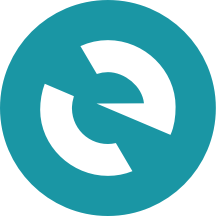MEW FAQ articles are based on real user questions, edited for privacy, clarity, and flow.
I know that my mnemonic phrase is very important for wallet recovery and I have kept it safe. I am certain that it’s correct, but now when I access my wallet, I don’t see the address I was using before! What happened to it and how do I find it again?
Let us commend you on remembering to keep your recovery phrase secure. However, we regret to say that we can’t approve your choice of online wallet access method. Using a mnemonic phrase directly in an online environment exposes your wallet to greater risk of phishing. Please consider switching to a hardware wallet to use with MEW web or our mobile MEW wallet app.
That being said, let’s talk about what a mnemonic phrase is, what it does, and why the 12 or 24 words may not always be enough.
A mnemonic phrase, alternatively called a recovery phrase or a seed, acts as the key to your wallet. It’s all you need to have full control of your assets and be able to restore your wallet if you lose your device. This method of recovery is used by hierarchical deterministic wallets, where the phrase generates and provides access to a nearly infinite number of addresses. In this sense, HD wallets are different from wallets generated through private key or keystore file methods because the latter only provide the user with one address.
If you are getting so many possible addresses, how can you keep track of them? Happily, they are always generated in the same order, so if you were using the first or tenth address in the list, it will always be the first or tenth address, as long as you are using the phrase correctly. What does it mean to use the phrase correctly? Most of the time it’s straightforward – just have your 12 or 24 words spelled accurately, in the right order. But if you run into issues, like not being able to access the wallet at all or seeing unexpected addresses, there are a a couple of things to consider.
1–Correct phrase?
Are you really, really sure that all words are spelled correctly? Experience shows that people can be very certain that their words are right, while missing the one little wrong letter that’s throwing them off. Don’t end up being the person who sends support their full phrase, insisting that everything is spelled correctly, only to have it pointed out that one word is, in fact, misspelled.
It’s helpful to know that all words used in phrases come from one BIP39 protocol list, so when in doubt, you can check your phrase against the list to make sure you don’t have any words that are not valid, to check that all words are spelled correctly, and to see whether there are similar words you may have substituted (like ‘air’ for ‘aim’). You can find the word list here.
2–Extra word?
Some interfaces like MEW, and hardware wallets like Trezor and Ledger, allow the user to add an extra word (also called ‘password’ or ‘passphrase’) to the generated mnemonic phrase to increase security. The word is chosen by the user, and it can be any length. What’s important to remember is that it actually acts like a 13th or 25th phrase word. After creating the wallet, the extra word MUST be used every time the phrase is used, otherwise different addresses will be shown.
This aspect of the extra word actually makes it handy for creating ‘secret wallets’. Even if someone knows your phrase, they’ll be able to get to the addresses accessed by the ‘plain’ phrase, but they won’t know about the addresses seen when using your password.
In fact, you can use different passwords with the same phrase, and get completely different sets of addresses for each variation. It’s like the butterfly effect! But of course, it’s essential to remember that you used an extra word in the first place, and what that extra word was.
On the other hand, if you are entering a phrase WITH an extra word and seeing strange addresses, try NOT using the word. Perhaps you confused it with an app password of some sort, and your phrase did not actually have a 13th or 25th word added to it.
3–Correct HD path?
Another aspect of HD wallets that can create a butterfly effect of addresses is the HD path. There are multiple ways of deriving addresses from phrases, and using a different path will lead to a different set of addresses from the same phrase. In Ethereum, the default path is m/44’/60’/0’/0, and on most interfaces it will be chosen for users automatically when creating a wallet.
However, different hardware wallets and different blockchains can have different default paths, so if you end up using the same phrase on different devices or interfaces, you can run into trouble. To prevent such issues, it’s best to keep in mind that HD paths exist and take note of the one you are using from the moment of wallet creation.
If it’s too late for that, you could try looking through every path that MEW offers and see if the expected address will appear. Mnemonic phrases are used across the Ethereum space for wallet recovery, so you can always try restoring access through various interfaces and wallets to see if you happen on the correct HD path by chance. In addition, some tools for locating ‘lost’ Ethereum addresses are available and can be found through a Google search, but keep in mind that using your phrase in an online environment will make your wallet vulnerable to phishing.
4–Multiple MEW wallet app accounts?
If you are restoring in MEW wallet app with a seed phrase that you've gotten from the app or used in the app before, but not seeing an address you expect, try creating additional accounts. MEW wallet app supports multiple accounts generated from the same phrase, as well as the possibility of hiding accounts after you have generated them.
When you use the phrase to recover a wallet in the app, only the first account is recovered automatically. You may not immediately remember if you previously created multiple accounts and/or hid some of them, so try generating additional accounts again to find the one you are looking for.
Another possibility
Finally, do make sure that you are really seeing unexpected addresses, as opposed to unexpected balances. When you choose an address to interact with from the MEW interface, you won’t see token balances reflected on the initial address list, only ETH balances. You will only see your token balances once you access the dashboard, and even then you may have to add them as custom tokens. Remember, you can always check an address on a blockchain explorer like Etherscan to verify the balance and compare to what you are seeing in the interface.
We are hopeful that one of these suggestion jogs your memory and leads you to the correct wallet, after all! It’s good to remember going forward that in addition to 12 or 24 words, there may be a few more details to consider when using mnemonic phrases for wallet recovery, so you will never have to be certain but confused again!
Mnemonically and deterministically yours,
MEW

